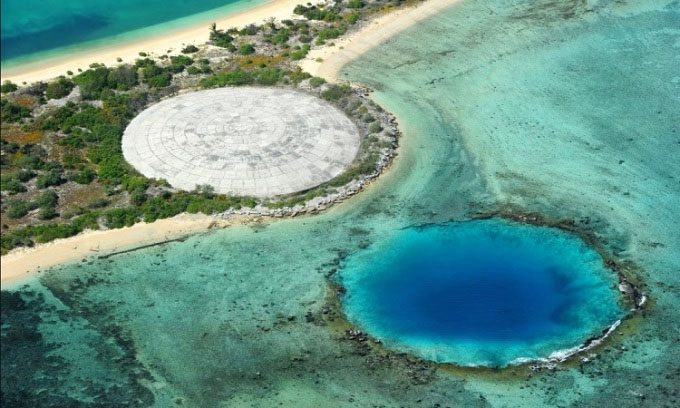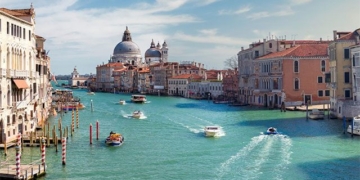The concrete dome containing radioactive soil and nuclear waste in the Marshall Islands is at risk of cracking due to rising sea levels, threatening nearby residents.
At first glance, the turquoise waters surrounding the Marshall Islands appear to be a paradise. However, this picturesque setting in the Pacific was once the site of 67 nuclear bomb detonations during U.S. military tests from 1946 to 1958. The bombs exploded on land and underwater at Bikini Atoll and Enewetak Atoll, including a bomb that was 1,100 times more powerful than the atomic bomb dropped on Hiroshima. The level of radiation was comparable to that of the Chernobyl disaster, forcing hundreds of people to abandon their homes. Bikini Atoll remains uninhabited, while residents were encouraged by the U.S. government to return to Enewetak Atoll.

The massive concrete dome on Runit Island. (Photo: Ashahi Shimbun)
Today, there is hardly any visible evidence of the nuclear tests on the islands, apart from the 115-meter wide concrete dome nicknamed “The Tomb.” Built in the late 1970s, this aging and cracked structure on Runit Island contains over 90,000 cubic meters of radioactive soil and nuclear waste (equivalent to 35 Olympic-sized swimming pools), according to the Guardian.
Ian Zabarte, a representative of the Shoshone Native American tribe, is working to connect with Pacific Island residents affected by nuclear testing. “The health impacts of nuclear weapons testing on our people have never been studied. We have never received an apology, let alone compensation,” Zabarte shared.
“Cancer continues from generation to generation,” said Alson Kelen, a veteran pilot who grew up on Bikini Atoll. “If you ask anyone here whether nuclear testing has impacted their health, the answer is yes.”
The U.S. maintains that the Marshall Islands are safe. After gaining independence in 1979, the Marshall Islands became a self-governing entity but still heavily relies on Washington for economic support. Today, this island nation continues to use the U.S. dollar, and U.S. subsidies account for a significant portion of its GDP.
In 1988, an international court was established to adjudicate and demand the U.S. pay $2.3 billion for medical and resettlement costs for the Marshall Islands. The U.S. government refused, arguing that it had fulfilled its obligations by providing $600 million in the 1990s. In 1998, the U.S. stopped providing healthcare for island residents suffering from cancer, causing financial hardship for many. The ruling is pending renegotiation this year. Island residents are also calling on the U.S. to relocate the Runit Dome, which is at risk of collapse due to rising sea levels and the natural deterioration of the concrete structure.
The threat to “The Tomb” is particularly pronounced as the Marshall Islands average only 2 meters above sea level, making them highly vulnerable to rising ocean levels. The capital of the island nation, Majuro, is at risk of frequent flooding, according to a World Bank study. The U.S. claims that since the concrete dome is located in the Marshall Islands, the responsibility for repair does not fall on them.
Experts are unclear about what will happen to the environment if “The Tomb” collapses. It is challenging to monitor how the ecosystem will respond over time, as there are not many people on Bikini Atoll to observe changes. A 2012 United Nations report stated that the effects of radiation on the Marshall Islands are long-lasting and cause environmental contamination that is nearly irreversible. During a visit to the islands in 2016, Stephen Palumbi, a marine biology professor at Stanford University, was warned by local residents not to drink coconut water contaminated with radiation or eat coconut crabs due to polluted groundwater.
The nuclear explosions pose a significant threat to local biodiversity. A 1973 study by the U.S. government found both direct harm and long-term damage to marine life: fish exploded due to gas bubbles expanding from underwater pressure changes, and hundreds of sea otters died instantly.
According to Palumbi, the ocean’s resilience is impressive, as coral reefs in the Marshall Islands regrew 10 years after the bomb tests. However, evidence of the events that occurred decades ago remains, including layers of fine sediment covering the reefs.





















































